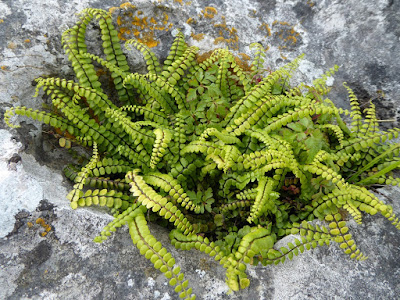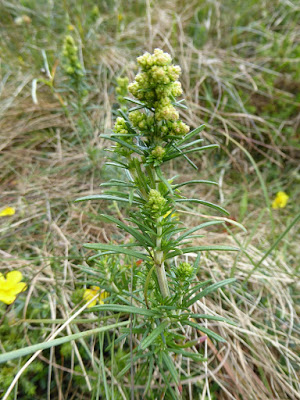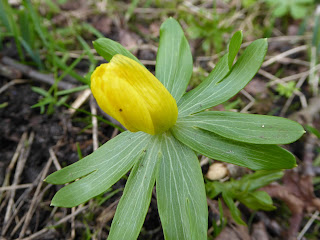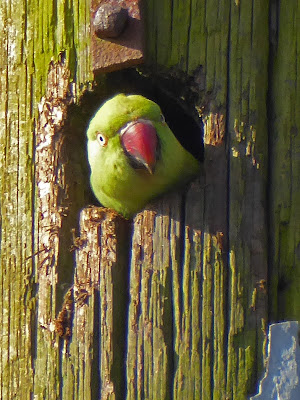A good turnout for the day excursion to the Sefton Coast. This time to Formby, instead of our more usual venue of Ainsdale.
 |
| Red Squirrel (Sciurus vulgaris) |
An initial walk around the Red Squirrel reserve - where the residents were fairly relaxed and tolerant of visitors. Plenty of opportunities to see these attractive animals.
 |
| Dune Helleborine (Epipactis dunensis) |
This reserve incidently provided our best view of helleborines special to the dune environments - Dune Helleborine:
While most of the specialities of this coastal area are found in the dune slacks, the woodland itself is very interesting, with trees stunted and sculpted by the harsh conditions and many pines closest to the sea looking like Bonsai trees. A birch 'tree' seemed to be successfully coping with the environment by adopting a creeping strategy rather than growing vertically.
 |
| Birch 'tree', with Bonsai pines |
Species seen:
Woodpigeon, Carrion Crow, Jay, Magpie, Pheasant, Cinnabar Moth Caterpillar, Common Blue Butterfly, Gatekeeper or Hedge Brown, Burnet Moths, Wild Parsnip, Garden Asparagus, Yarrow, Lesser Burdock, Creeping Thistle, Spear Thistle, Canadian Fleabane, Garden Fleabane, Mayweed, Common Fleabane, Common Ragwort, Corn (or Perennial) Sow-thistle, Prickly Sow-thistle, Himalayan Balsam, Bugloss, Hound's-tongue, Viper's-bugloss, Green Alkanet, Harebell, Honeysuckle, White Campion, Common Chickweed, Sand Sedge, Sea-buckthorn, Portland Spurge, Common Bird's-foot-trefoil, Common Restharrow, Red Clover, White Clover, Tufted Vetch, Turkey Oak, Lesser Centaury, Common Stork's-bill, Herb-Robert, Black Currant, Montbretia, Selfheal, Lilac, Rosebay Willowherb, Great Willowherb, Evening-primrose, Dune Helleborine, Common Toadflax, Ribwort Plantain, Marram, Lyme-grass, Agrimony, Dewberry, Bramble, Cleavers, Creeping Willow, Common Figwort, Bittersweet (Woody Nightshade)
After refreshments from the squirrel cafe and ice cream van, some of the party continued towards Gypsy wood and some dune slacks to see if there would be anything different in these areas. It was surprising how many different plants were seen with an apparently small change in habitat. Also surprising were the patchy distributions - with a patch of Fat Hen; then Spring Beauty; then Polypody (Western Polypody, we think); then Corn Sow Thistle; then Common Valerian and Angelica; then Common Fleabane.
 |
| Western? Polypody (Polypodium interjectum) |
 |
| Corn Sow Thistle (Sonchus arvensis) |
 |
| Common Fleabane (Pulicaria dysenterica) |
 |
| Marram Grass (Ammophila arenaria) |
Other species noted included: Swift, Black-headed Gull, Common Gull, Lesser Black-backed Gull, Emperor Dragonfly, Wild Angelica, Wild Carrot, Mugwort, Carline Thistle, Blue Fleabane, Hemp-agrimony, Ploughman's-spikenard, Ox-Eye/Garden Daisy, Sea Rocket, Sea Radish, Red Valerian, Fat-hen, Stonecrop, Sea Spurge, Kidney Vetch, Yellow-wort, Water Mint, Purple-loosestrife, Common Poppy, Meadowsweet, Lady's Bedstraw, Common Valerian.
We were fortunate to have good weather after recent rainy days. An excellent day out, giving an indication of the great variety along the Sefton coast, if not the showy specialists in the Ainsdale dune slacks.











































